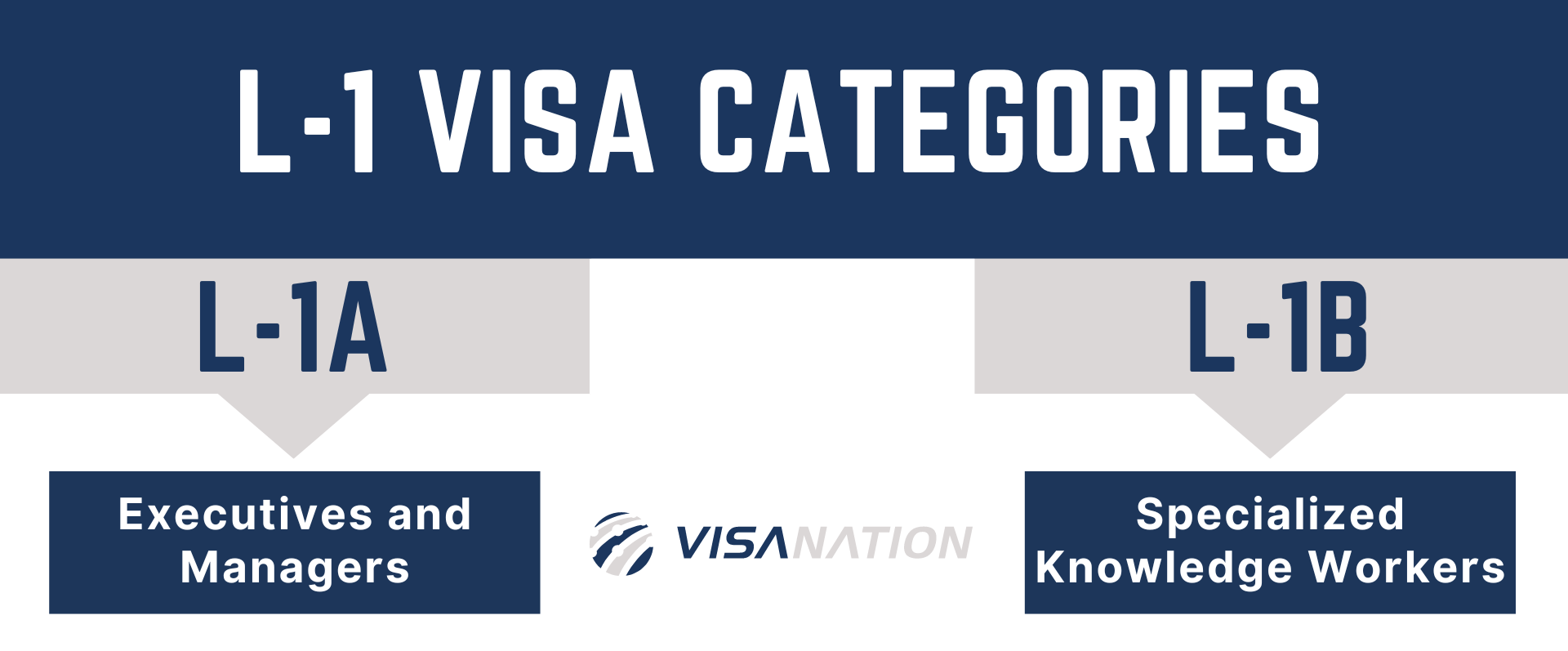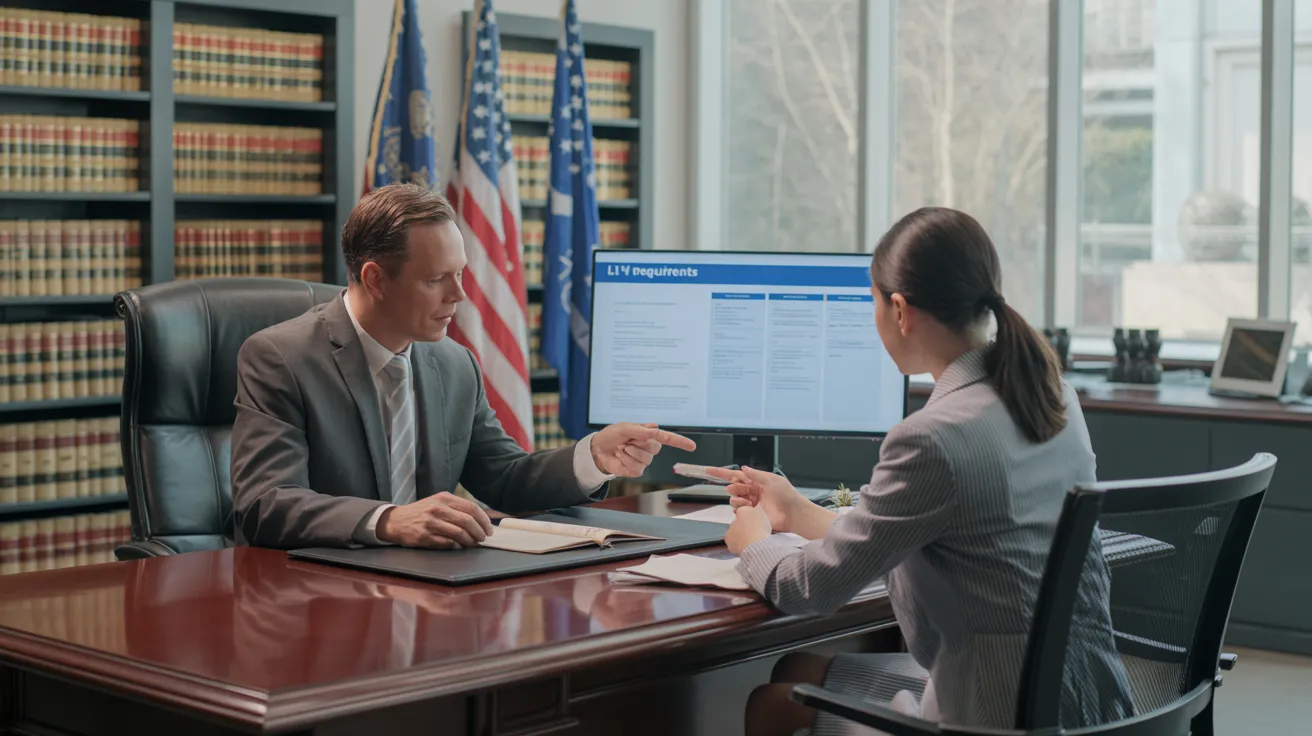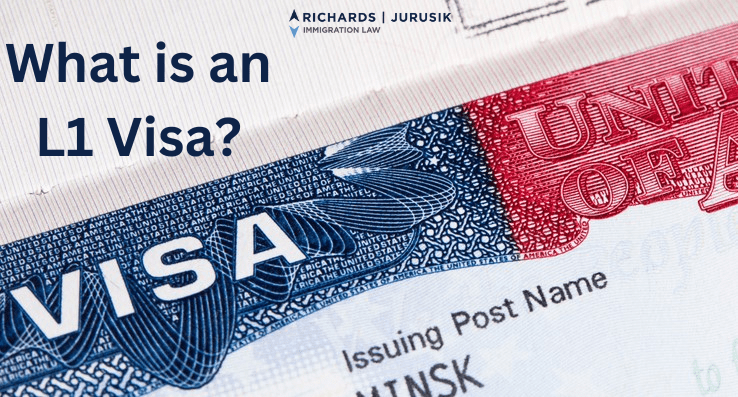Unlocking Opportunities: A Comprehensive Overview to the L1 Visa Process
The L1 visa process presents a critical path for international firms seeking to move key staff members across borders. Comprehending the subtleties of eligibility standards, the distinctions between L-1A and L-1B visas, and the intricacies of the application process can greatly influence a candidate's success. Nevertheless, steering this facility landscape is not without its challenges, and cautious focus to documentation and employer sponsorship is important. As we check out the vital components of this process, the approaches for getting rid of potential obstacles will end up being apparent, disclosing just how informed prep work can open up a world of possibilities.
Recognizing the L1 Visa
Comprehending the L1 visa involves acknowledging its significance as an important device for multinational firms looking for to move skilled employees in between worldwide offices. This non-immigrant visa classification facilitates the movement of executives, managers, and specialized understanding employees to the USA, consequently making it possible for organizations to preserve functional continuity and harness global ability efficiently. The L1 visa is split right into 2 main categories: L-1A for managers and execs, and L-1B for employees possessing specialized knowledge.The L1 visa offers an important duty in boosting a firm's affordable side in the global market - L1 Visa. By permitting companies to move their key employees, companies can guarantee that vital projects are handled by qualified individuals that are already acquainted with the company's culture and functional procedures. This internal transfer mechanism not just fosters knowledge sharing yet likewise promotes innovation and cooperation across borders.Moreover, the L1 visa is usually favored for its relatively uncomplicated application procedure contrasted to other visa classifications, as it enables twin intent, allowing holders to seek long-term residency while on a short-lived copyright. This attribute makes the L1 visa particularly appealing for both employers and workers, as it simplifies the pathway for experienced professionals to develop long-lasting residency in the USA
Eligibility Requirements
Eligibility for the L1 visa depends upon a number of crucial criteria that assure both the staff member and the company fulfill certain credentials. This non-immigrant visa is created for international firms to move staff members from consular services to united state counterparts.Firstly, the company must be a certifying organization, which consists of a moms and dad company, branch, affiliate, or subsidiary of a united state business. The business needs to have been doing organization for a minimum of one year both in the united state and abroad. This assures that the business has adequate functional stability and a reputable presence.Secondly, the worker needs to hold a supervisory, executive, or specialized expertise placement. For L1A visas, the candidate has to show managerial or executive certifications, while L1B visas focus on specialized knowledge relevant to the company's products, services, or processes. In addition, the staff member should have functioned for the international entity for at the very least one constant year within the last three years prior to their application.Lastly, the staff member's role in the U.S. must align with their previous position, making sure that their skills and experience are leveraged for the company's advantage.
Sorts Of L1 Visas
The L1 visa category comprises two main kinds created to promote the transfer of employees within international business: the L1A visa for managers and executives, and the L1B visa for employees with specialized expertise. Each kind offers distinctive purposes and has specific qualification criteria.The L1A visa is tailored for people that hold supervisory or executive placements within a business. This visa enables high-level workers to transfer to a united state branch, subsidiary, or affiliate of the very same company. Applicants for the L1A visa have to demonstrate that they have actually been used in a supervisory or executive ability for at the very least one constant year within the previous 3 years before their application. Furthermore, this visa uses a longer duration of keep, originally granted for 3 years, with the opportunity of extensions for up to 7 years.In contrast, the L1B visa is meant for specialists with specialized expertise associated to the company's items, services, or processes. To qualify, candidates should prove that their knowledge is essential to the company which they have actually benefited a minimum of one continuous year within the last three years in a function that required this specialized expertise. The L1B visa is initially granted for three years, with extensions available for up to five years.Both visa types are crucial for business looking for to enhance their worldwide procedures by leveraging knowledgeable personnel, thus promoting development and performance within the U.S. market.
Application Process
Guiding with the L1 copyright procedure includes a number of vital steps that must be carefully complied with to guarantee a successful outcome. The procedure begins with the U.S. company, who must first develop qualification by showing a qualifying connection with the foreign entity and confirming that the employee meets the specific requirements for the L1 visa classification being sought.Once eligibility is validated, the company initiates the procedure by submitting Kind I-129, the Application for a Nonimmigrant Employee, with the U.S. Citizenship and Immigration Provider (USCIS) This kind must be accompanied by a thorough description of the task tasks to be carried out, the organizational structure of both the U.S. and foreign entities, and the staff member's credentials. It's essential to confirm that all info is precise and complete, as noninclusions or errors can cause delays or denials.Upon approval of the I-129 request, the next action includes the employee getting the L1 visa at an U.S. consular office or consulate in their home country. This phase requires the conclusion of Type DS-160, the Online Nonimmigrant copyright, and arranging a meeting. Throughout the meeting, the candidate needs to offer proof supporting their credentials and the company's petition.After the visa is provided, the worker can go into the USA to operate in the designated function. Generally, careful preparation and adherence to every step of the application process are necessary for an effective L1 visa end result.
Called for Documents

Important Forms Required
Steering the L1 Visa process requires cautious interest to the vital kinds and documentation necessary for a successful application. The primary type needed is the Form I-129, Request for a Nonimmigrant Employee, which need to be completed and sent by the united state employer. This kind lays out the details of the employment deal and the certifications of the worker looking for the L1 Visa.Alongside Form I-129, the applicant will certainly require to total Kind I-539 if coming with relative are likewise requesting visas. Additionally, the employer has to provide proof of the certifying connection between the united state entity and the foreign entity, often necessitating the submission of company records such as articles of unification or financial statements.Moreover, it is vital to include the L Classification Supplement to Kind I-129, which specifies the type of L Visa being asked for-- either L-1A for managers and executives or L-1B for employees with specialized understanding. Candidates need to guarantee that all forms are signed and dated appropriately, as insufficient entries can lead to delays or rejections. Correctly constructing these crucial types lays the foundation for a smoother L1 copyright process.

Sustaining Proof Requirements
Supporting paperwork is crucial for a successful L1 copyright, as it substantiates the claims made in the request. Applicants have to provide a variety of files to demonstrate qualification for the visa, which is categorized into two primary types: proof of the certifying partnership between the U.S. and foreign entities and evidence of the candidate's qualifications.To establish the connection, applicants must submit documents such as corporate business charts, financial declarations, and proof of possession. These files verify that the international firm has a qualifying partnership with the U.S. company, whether as a parent company, subsidiary, branch, or affiliate.For the applicant's qualifications, important records consist of a comprehensive work letter from the international employer, detailing the applicant's task title, obligations, and duration of work. Additionally, instructional qualifications, such as levels and diplomas, ought to be provided to confirm the applicant's know-how in the pertinent area.
Company Sponsorship Files

Common Difficulties
Maneuvering the L1 visa process offers a number of common challenges that candidates should know. Trick concerns commonly include rigorous documentation demands, potential hold-ups in handling times, and the necessity for rigorous legal compliance. Recognizing these barriers can assist candidates better prepare and alleviate dangers during their copyright journey.
Paperwork Needs
The L1 copyright procedure frequently presents significant obstacles connected to documents needs. Applicants must provide comprehensive paperwork to develop eligibility, which can result in confusion and potential hold-ups. Key documents include evidence of a certifying relationship between the united state and foreign company, proof of the applicant's employment history, and in-depth information about the job role in the U.S.One common challenge is collecting adequate evidence to show the nature of the certifying partnership. Business usually have a hard time to existing clear business charts or financial statements that show the link between the entities. Furthermore, making certain that letters of assistance from companies precisely mirror the applicant's job tasks and certifications is crucial, as vague descriptions can result in denials.Another problem arises from the demand for detailed job summaries that straighten with the L1 visa categories. Candidates should articulate not only their present function but also their managerial or specialized knowledge duties plainly. This requires a detailed understanding of both the candidate's setting and the regulatory language made use of in L1 applications.
Handling Dead Time
Experiencing hold-ups in processing times is an usual challenge encountered by L1 visa applicants, typically leading to irritation and uncertainty. A number of elements add to these hold-ups, including high application quantities, raised scrutiny of applications, and administrative stockpiles within the U.S. Citizenship and Migration Provider (USCIS) Candidates may find that handling times can vary significantly relying on the service facility managing their application, as each center has its very own workload and performance degrees. In addition, the complexity of the candidate's instance, such as the need for substantial documents or information, can further extend wait times.In some instances, concerns connected to the applicant's current migration standing or previous visa history may also bring about extra hold-ups, as USCIS may need further testimonial or info. It is essential for candidates to remain aggressive during this duration, preserving open interaction with their companies and lawful agents to deal with any kind of potential problems promptly.Understanding these processing time difficulties can assist L1 visa candidates prepare for possible hold-ups and minimize the influence on their shift and occupation strategies. Patience and diligence are important merits in navigating this intricate procedure.
Legal Compliance Issues
Numerous L1 visa applicants encounter legal compliance issues that can complicate their trip toward acquiring the visa. Recognizing and sticking to the certain laws set by the united state Citizenship and Immigration Solutions (USCIS) is vital. Usual difficulties consist of demonstrating the certifying partnership in between the international and U.S. companies, as well as proving that the candidate has the requisite customized expertise or managerial capacity.Additionally, candidates need to offer detailed documentation describing their work tasks, company structure, and economic stability of the united state entity. Poor or unreliable documentation can bring about hold-ups and even rejections. Employers should also guarantee that they abide by labor regulations, consisting of wage and functioning problem criteria, which can affect visa eligibility.Another usual issue entails maintaining conformity with the terms of the visa once provided. Changes in work condition, job obligations, or firm framework can demand changes to the visa, which if not addressed promptly can cause legal issues. Because of this, remaining notified concerning conformity needs and seeking legal advice when needed is vital to navigate the complexities of the L1 visa procedure efficiently.
Tips for Success
Success in the L1 copyright process often hinges on careful prep work and focus to detail. To enhance your possibilities of authorization, start by extensively comprehending the qualification demands for both the L1A and L1B visa groups. Assess whether your placement at the company certifies as supervisory, exec, or specialized expertise, as this categorization significantly influences your application.Next, gather substantial documents that corroborates your claims. This includes business charts, thorough work descriptions, and evidence of the business's functional structure. Clear and concise evidence of the certifying relationship in between the U.S. entity and the foreign entity is vital. Confirm that all files are arranged logically and offered in a specialist manner, as this mirrors your dedication and seriousness about the application.Engage the solutions of a skilled immigration attorney that focuses on L1 visas. Their experience can verify vital, leading you via complex regulations and guaranteeing that all documentation conforms with current laws. Furthermore, prepare for the interview by practicing response to common inquiries and preparing to review your duty and payments to the firm in deepness.
Often Asked Concerns
Can Family Members Members Come With the L1 Visa Owner?
Yes, family members of L1 visa owners, consisting of partners and single kids under 21, can go along with the main visa holder. They might also request L2 visas, which permit them to live in the USA.
Just How Lengthy Can I Remain On an L1 Visa?
The L1 visa permits preliminary keeps of up to three years, with the possibility of expansion. L1A visa owners may remain for an optimum of seven years, while L1B visa owners can remain for five years.
Can L1 Visa Owners Get a copyright?
Yes, L1 visa owners can request a permit. L1 Visa Requirements. They might seek long-term residency via employment-based categories, typically requiring sponsorship from their employer, provided they meet the necessary certifications and documents needs
What Takes place if My L1 copyright Is Denied?
If your L1 copyright is denied, you might obtain a notification detailing the factors for denial. You can seek to appeal the choice, reapply, or discover alternative visa choices based on your circumstances.
Are There Any Kind Of Travel Limitations With an L1 Visa?
An L1 visa generally enables worldwide travel; nevertheless, re-entry to the U. L1 Visa Requirements.S. is contingent upon maintaining legitimate status. Tourists need to ensure conformity with visa problems to prevent problems upon return
Final thought
